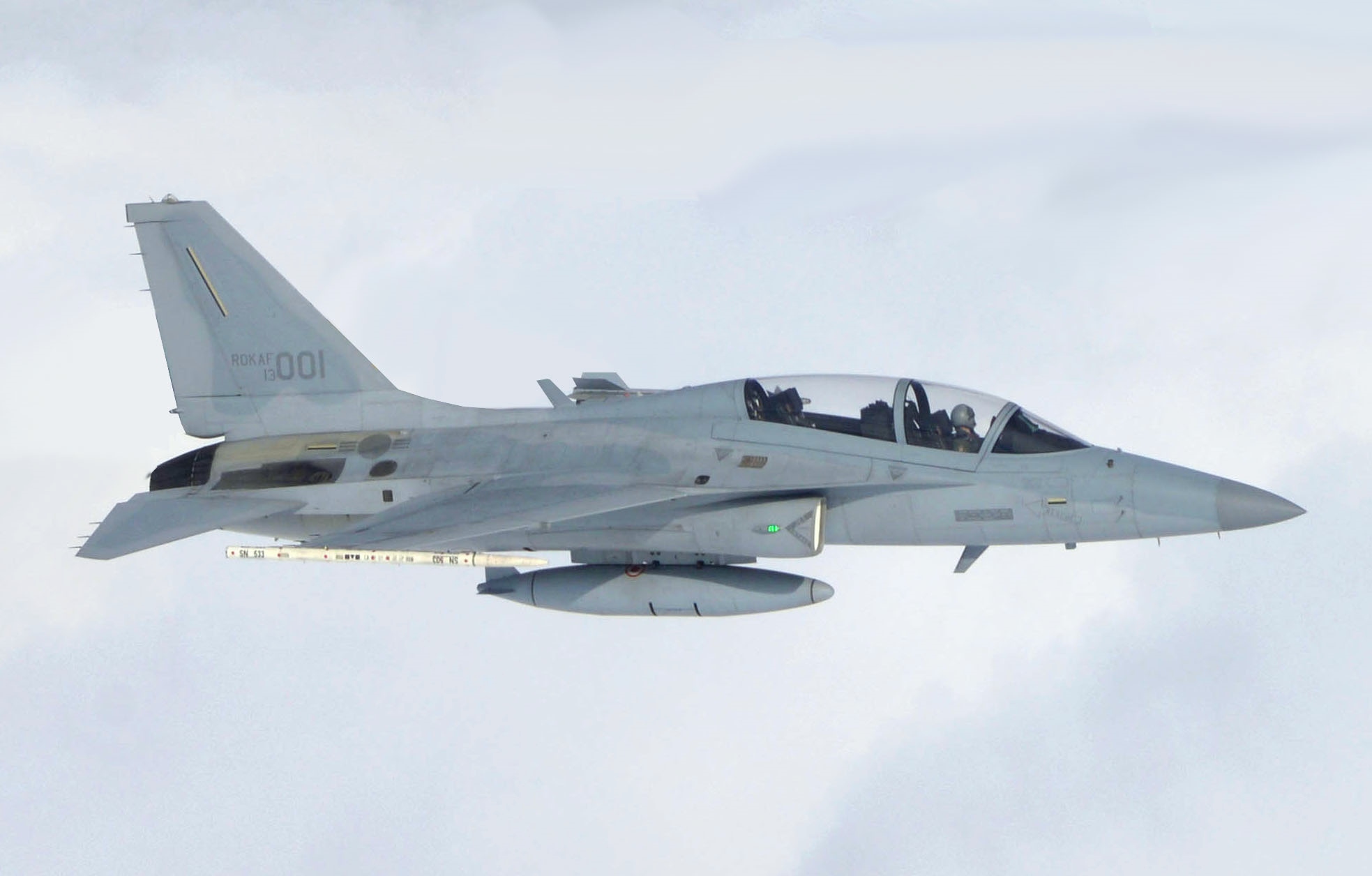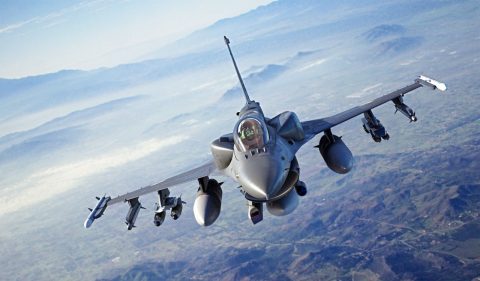The Philippine Air Force (PAF) continues its modernization program with potential acquisitions to strengthen its air defense capabilities. Two notable contenders in this process are the FA-50 Block 20 and the F-16 Block 70. This article provides a detailed comparison between these two advanced fighter aircraft, examining their specifications, capabilities, and potential value for the Philippine Air Force's strategic requirements.

The FA-50 Block 20 - Korea Aerospace Industries' light combat aircraft

The F-16 Block 70 - Lockheed Martin's advanced multirole fighter
Background and Overview
FA-50 Block 20
The FA-50 Block 20 is an advanced variant of the FA-50 Fighting Eagle, developed by Korea Aerospace Industries (KAI) in partnership with Lockheed Martin. The Philippine Air Force already operates 12 FA-50PH light combat aircraft, making it a familiar platform. The Block 20 upgrade represents a significant enhancement over the baseline FA-50, with improved radar, avionics, and weapons capabilities.
F-16 Block 70
The F-16 Block 70 is the latest and most advanced version of the proven F-16 Fighting Falcon, manufactured by Lockheed Martin. With over 4,600 F-16s delivered to 25 countries worldwide, it is one of the most successful and combat-proven fighter aircraft. The Block 70 variant includes modern avionics, AESA radar, and enhanced structural life, representing the cutting edge of F-16 development.
Technical Specifications Comparison
| Specification | FA-50 Block 20 | F-16 Block 70 |
|---|---|---|
| Manufacturer | Korea Aerospace Industries (KAI) with Lockheed Martin | Lockheed Martin |
| Role | Light combat aircraft / Advanced trainer | Multirole fighter |
| Crew | 2 (pilot and co-pilot/instructor) | 1 (single-seat variant) |
| Length | 13.14 m (43.1 ft) | 15.09 m (49.5 ft) |
| Wingspan | 9.45 m (31 ft) | 9.96 m (32.7 ft) |
| Height | 4.94 m (16.2 ft) | 5.09 m (16.7 ft) |
| Empty Weight | 6,470 kg (14,264 lb) | 9,200 kg (20,300 lb) |
| Max Takeoff Weight | 12,300 kg (27,120 lb) | 19,200 kg (42,300 lb) |
| Engine | 1 × General Electric F404-GE-102 turbofan | 1 × General Electric F110-GE-129 or Pratt & Whitney F100-PW-229 |
| Thrust | 78.7 kN (17,700 lbf) | 131.6 kN (29,588 lbf) with afterburner |
| Max Speed | Mach 1.5 (1,837 km/h, 1,141 mph) | Mach 2+ (2,145+ km/h, 1,333+ mph) |
| Combat Radius | 1,851 km (1,150 mi) | Greater than 1,850 km (1,150 mi) |
| Service Ceiling | 14,630 m (48,000 ft) | 15,240 m (50,000+ ft) |
| Rate of Climb | 198 m/s (39,000 ft/min) | 254 m/s (50,000 ft/min) |
| Hardpoints | 7 total (1 under-fuselage, 6 under-wing) | 9 total (1 under-fuselage, 8 under-wing) |
| Max Payload | Up to 3,700 kg (8,150 lb) | Up to 7,700 kg (17,000 lb) |
| Onboard Gun | 1 × 20 mm (0.787 in) General Dynamics A-50 three-barrel rotary cannon | 1 × 20 mm (0.787 in) M61A1 Vulcan 6-barrel rotary cannon with 511 rounds |
| Radar | EL/M-2032 or Elta ELM-2052 AESA radar (Block 20) | Northrop Grumman APG-83 AESA radar |
| Unit Cost | Approximately $30-35 million | Approximately $65-70 million |
Weapons and Combat Capabilities
FA-50 Block 20
The FA-50 Block 20 can carry a variety of air-to-air and air-to-ground weapons:
- Air-to-Air Missiles: AIM-9 Sidewinder
- Air-to-Ground Missiles: AGM-65 Maverick
- Bombs: Mk 82, CBU-97/105, JDAM
- Additional: Countermeasures, targeting pods
The Block 20 variant introduces enhanced radar capabilities and improved weapons integration, significantly increasing its combat effectiveness compared to the baseline FA-50.
F-16 Block 70
The F-16 Block 70 offers a superior weapons payload and variety:
- Air-to-Air Missiles: AIM-9 Sidewinder, AIM-120 AMRAAM
- Air-to-Ground Missiles: AGM-65 Maverick, AGM-88 HARM anti-radiation missile
- Bombs: Mk 82, Mk 84, CBU-97/105, JDAM, SDB, Paveway laser-guided bombs
- Additional: Advanced electronic warfare suite, targeting pods, and reconnaissance pods
The APG-83 AESA radar provides superior detection ranges and multi-target tracking capabilities, significantly enhancing the F-16's effectiveness in both air-to-air and air-to-ground missions.
Avionics and Technology
FA-50 Block 20
The Block 20 upgrade brings significant improvements to the FA-50's avionics suite:
- AESA radar (EL/M-2032 or Elta ELM-2052) for improved target detection and tracking
- Modern glass cockpit with multi-function displays
- Hands On Throttle And Stick (HOTAS) controls
- Link-16 datalink capability for network-centric operations
- Enhanced electronic warfare suite
F-16 Block 70
The F-16 Block 70 features state-of-the-art avionics and systems:
- Northrop Grumman APG-83 AESA radar with greater range and capabilities
- Advanced mission computer with higher processing speeds
- Modern cockpit with large-format, high-definition displays
- Advanced electronic warfare suite including internal countermeasures
- Link-16 datalink for enhanced situational awareness
- Joint Helmet Mounted Cueing System (JHMCS)
- Automatic Ground Collision Avoidance System (Auto GCAS)
- Infrared Search and Track (IRST) capability
Operational Considerations for the Philippine Air Force
FA-50 Block 20 Advantages
- Fleet Commonality: PAF already operates FA-50PH aircraft, easing integration
- Lower Cost: Approximately half the price of an F-16 Block 70
- Lower Operating Costs: Reduced maintenance and flight hour costs
- Two-Seat Configuration: Offers training capabilities alongside combat roles
- Existing Infrastructure: Maintenance facilities and trained personnel already available
FA-50 Block 20 Limitations
- Limited Payload: Approximately half the weapons capacity of F-16
- Reduced Air Combat Capability: Less effective in air superiority role
- Lower Performance: Lower speed and thrust-to-weight ratio
- Shorter Range with Full Payload: More dependent on available basing
- More Limited Weapons Integration: Fewer advanced weapons options
F-16 Block 70 Advantages
- Superior Combat Capability: True multirole fighter with higher performance
- Advanced Sensor Suite: Superior radar and electronic systems
- Greater Payload Capacity: Can carry twice the weapons load
- Higher Speed and Maneuverability: Better performance in air combat
- Wider Weapons Integration: Compatible with more advanced weapons
- Combat Proven: Extensive operational history worldwide
F-16 Block 70 Limitations
- Higher Acquisition Cost: Nearly double the price per unit
- Increased Operating Costs: More expensive to maintain and operate
- New Infrastructure Required: New maintenance facilities and training needed
- Single-Seat Configuration: Lacks dual-role training capability
- Steeper Learning Curve: New platform for PAF pilots and ground crew
Strategic Considerations for the Philippine Air Force
Territorial Defense Requirements
The Philippines faces numerous maritime and territorial challenges in the South China Sea (West Philippine Sea). The primary considerations include:
- Air patrol capabilities over vast maritime areas
- Credible deterrence against potential aggressors
- Ability to counter various threats including naval vessels and air incursions
- Integration with existing Philippine defense systems
Interoperability with Allies
Both aircraft offer strong interoperability with Philippine allies:
- FA-50: Interoperable with South Korean and other allied forces
- F-16: Highly interoperable with US and other NATO forces, including those in the Asia-Pacific region
Force Composition Considerations
When determining the optimal force composition, the PAF must consider:
- Total fleet size achievable within budget constraints
- Balance between high-end and cost-effective platforms
- Mixed fleet approach versus single platform standardization
- Long-term sustainability and upgrade paths
Conclusion: Which Fighter is Best for the Philippine Air Force?
Both the FA-50 Block 20 and F-16 Block 70 offer significant capabilities that would enhance the Philippine Air Force's operational effectiveness. The optimal choice depends on strategic priorities, budget constraints, and long-term planning.
The FA-50 Block 20 presents a cost-effective solution that leverages existing PAF infrastructure and experience. It offers adequate capabilities for territorial defense missions at a price point that could allow for the acquisition of more airframes. This approach would enable broader coverage of the Philippines' vast maritime territory.
The F-16 Block 70 represents a significant leap in capability with superior performance, sensors, and weapons capacity. While more expensive, it provides a credible deterrent against sophisticated threats and would establish the PAF as a more formidable air force in the region.
A mixed fleet approach could also be considered, where additional FA-50 Block 20 aircraft complement a smaller number of F-16 Block 70 fighters. This would balance cost considerations with the need for high-end capabilities for specific mission sets.
Ultimately, the decision should align with the Philippines' National Defense Strategy, available budget for both acquisition and sustainment, and realistic assessment of the regional security environment. Whichever platform is selected, it will represent a significant enhancement to the Philippine Air Force's capabilities and contribute to regional stability.
Note: This analysis is based on publicly available information as of April 2025. Actual specifications and capabilities may vary based on specific configuration options selected by the Philippine Air Force.





